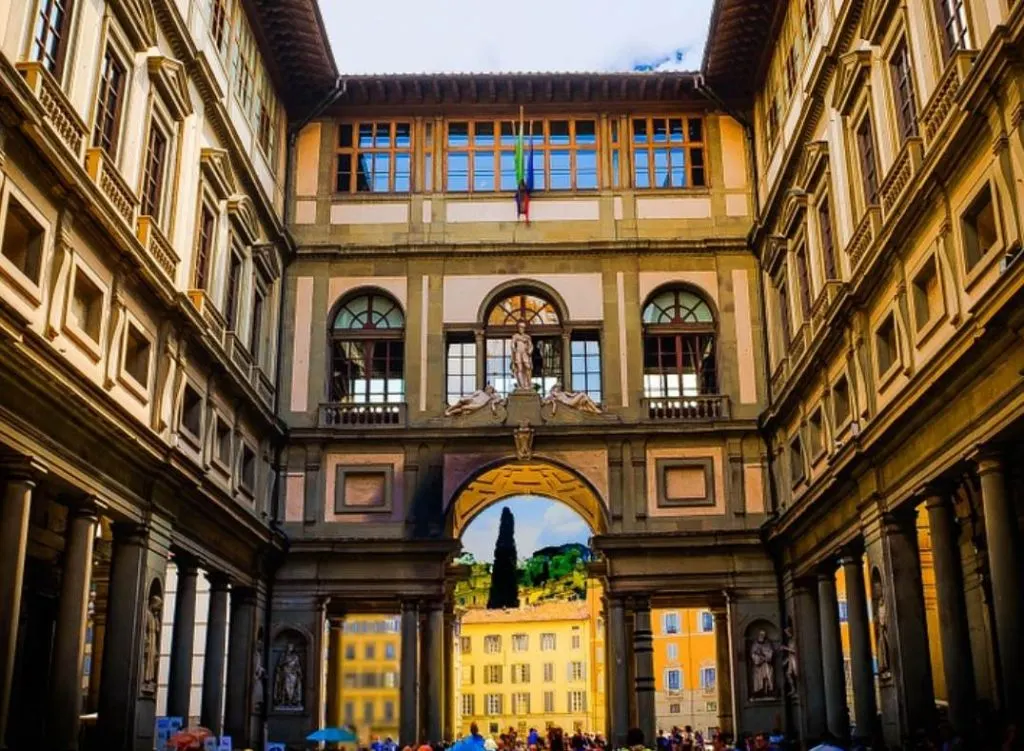Roman mythology has been an important source for artists for many centuries. The Renaissance marked a rebirth of interest in classical mythology.
It’s not surprising that one of the most famous Renaissance paintings in history depicts a Roman goddess.
Let’s take a closer look at some of the most interesting facts about The Birth of Venus by Sandro Botticelli, one of the Renaissance master’s ultimate masterpieces.
1. It was probably completed in the mid-1480s
The Birth of Venus is one of the most famous paintings ever created. It was painted by Sandro Botticelli (1445-1510), an Italian artist who was born in Florence.
He only spent a couple of brief periods in other Italian cities, including some months in Pisa and while working in the Sistine Chapel in Rome between 1481 and 1482.
Only one of the paintings that he produced during his lifetime was dated, which makes it tricky to know the exact date when he completed his masterpieces.
Art historians generally agree that he completed this painting around 1485, a time during his career when he singlehandedly revived mythological subjects in monumental artworks.
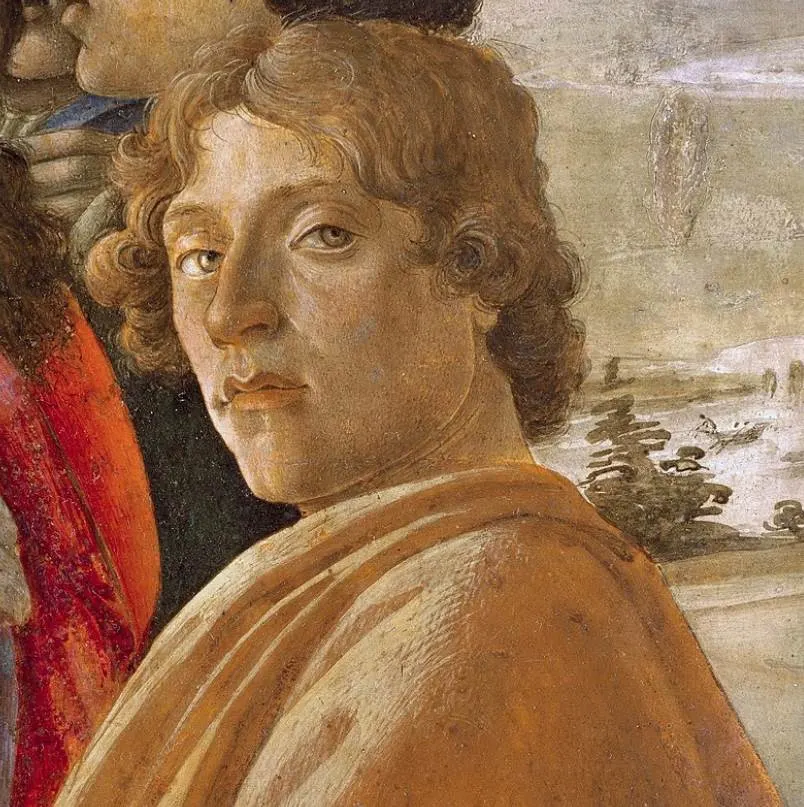
2. It depicts a Roman goddess shortly after she was born
The painting depicts the Roman goddess Venus as she emerges out of the Sea shortly after she was born. She stands naked in a huge shallop shell.
The story of Venus’s birth takes place on the Greek island of Cythera which is situated near the southeastern tip of the Peloponnese peninsula.

She is partially covering her breasts and holding her hair. This particular pose is known as “Venus Anadyomene” and is one of the best-known representations of the Roman goddess.
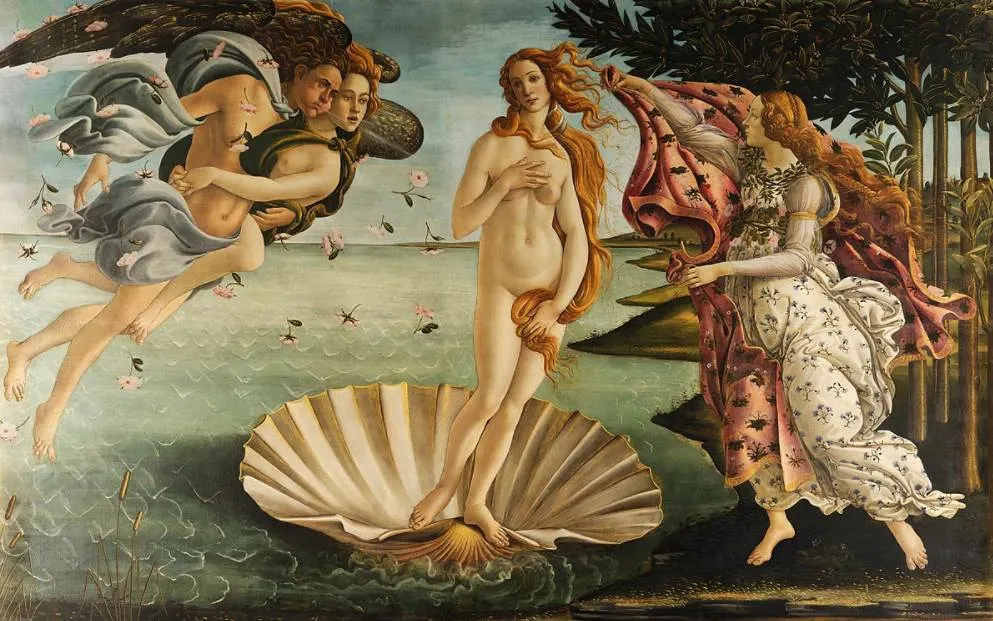
3. Venus is adjoined by the god of wind and the deity of Spring
Although Venus is the main figure of the work, she is adjoined by two figures on the left and one figure on the right.
The man on the right has been identified as the wind god Zephyr who blows Venus onto the shore. He is possibly carrying the goddess Aura, a name that translates to “breeze.”
The woman might also be Chloris, a nymph that was associated with Spring and flowers and to whom Zephyr was married.
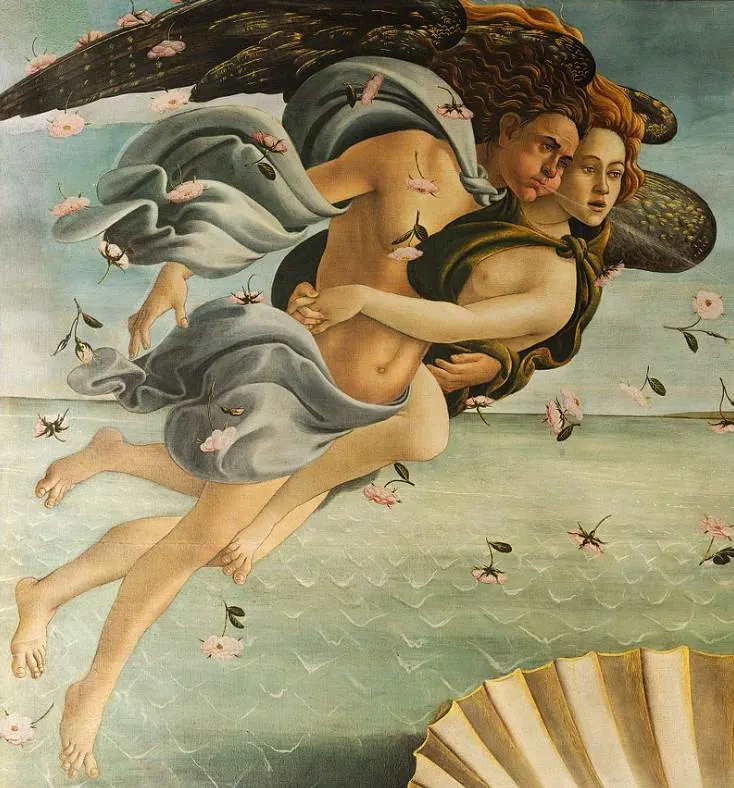
On the right, we can see a woman who is ready to put an expensive dress onto the naked Venus as she arrives on the island.
She might represent Flora, the Roman version of Chloris. She wears a dress decorated with flowers, a notion that strengthens this theory.

4. The artist’s other masterpiece is not a pair with this painting
The exact details of the painting remain a mystery, and that’s why art historians have focused on both The Birth of Venus and Botticelli’s other masterpiece called “Primavera” to reach conclusions.
It was probably painted 3 years earlier in 1482 and features a number of figures that can be found in his later masterpiece as well. Chloris, for instance, transforms into the Roman goddess Flora in this work.
Botticelli likely attempted to replicate works from classical antiquity and the larger context is a marriage celebration.
Art historians do agree that both paintings are not a pair, even though some characters appear in both works.

5. Its meaning is most probably not as complicated as Botticelli’s Primavera
Primavera is one of the most complicated paintings in art history because the groups of figures are apparently unrelated to each other.
The Birth of Venus is less complicated in that sense because it merely depicts a single story, that of Venus arriving in Cythera following her birth.
This story was already the subject of art produced in ancient Rome. The “House of Venus” in Pompeii features a well-preserved fresco dating back to the 1st century A.D. that depicts the goddess Venus in a scallop shell.
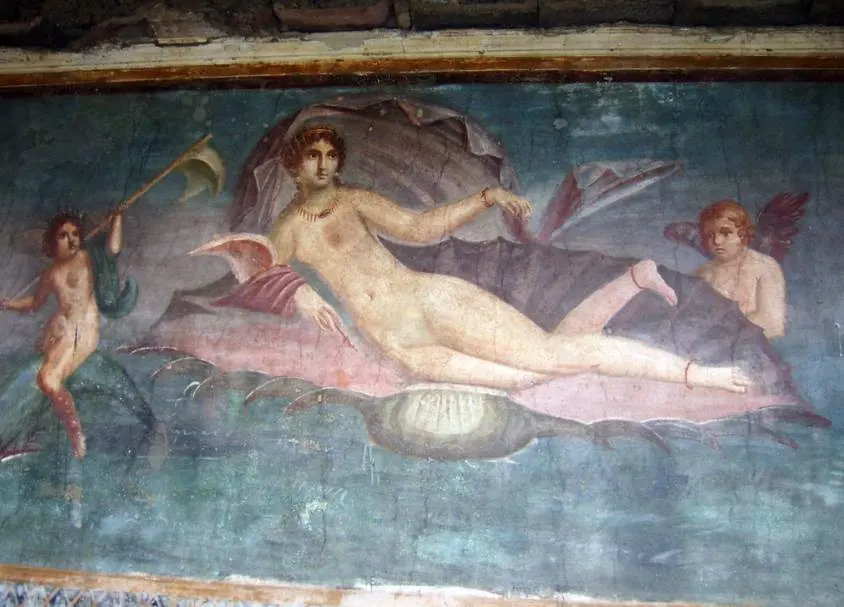
6. The painting was most probably inspired by a Homeric hymn
Frescoes from classical antiquity might have served as the inspiration for Sandro Botticelli’s masterpiece, but there is probably another source as well.
A collection of 33 ancient Greek hymns known as “Homeric Hymns” feature a text that bears a striking resemblance to the painting.
This hymn was published about 3 years after the painting was completed in Florence, but it’s likely that Botticelli was already familiar with it before.
Of august gold-wreathed and beautiful
Aphrodite I shall sing to whose domain
belong the battlements of all sea-loved
Cyprus where, blown by the moist breath
of Zephyros, she was carried over the
waves of the resounding sea on soft foam.
The gold-filleted Horae happily welcomed
her and clothed her with heavenly raiment.
7. There’s something peculiar about the pose of Venus
Although this representation of Venus is referred to as “Venus Anadyomene,” Botticelli incorporated another popular pose of the Roman goddess.
This pose s referred to as “Venus Pudica” and was first incorporated into an ancient Greek statue named “Aphrodite of Knidos” that was completed in the 4th century B.C.
Other famous sculptures using the Venus Pudica pose, in which Venus partially covers her naked body, are the Borghese Venus and the Venus de Medici.
In the Birth of Venus, the Roman goddess is depicted in a classical contrapposto stance but she is completely unbalanced. Her weight shifts completely to her left and her body is anatomically incorrect as well.
It’s fair to conclude that Botticelli depicted her like this on purpose as she is part of the world of imagination.

8. It was the first time since antiquity that a painting like this was produced
What’s remarkable about Sandro Botticelli is that his work never evolved during the Renaissance, not even when the High Renaissance emerged in the early 16th century.
On the contrary, his final works are more closely related to art produced by Gothic artists than the works of Leonardo da Vinci and Raphael.
The Renaissance master was, however, an innovative artist nonetheless. This painting was the first depiction of a nude female on such a large scale.
It’s one of the main reasons why The Birth of Venus has become such an iconic painting in the history of art.
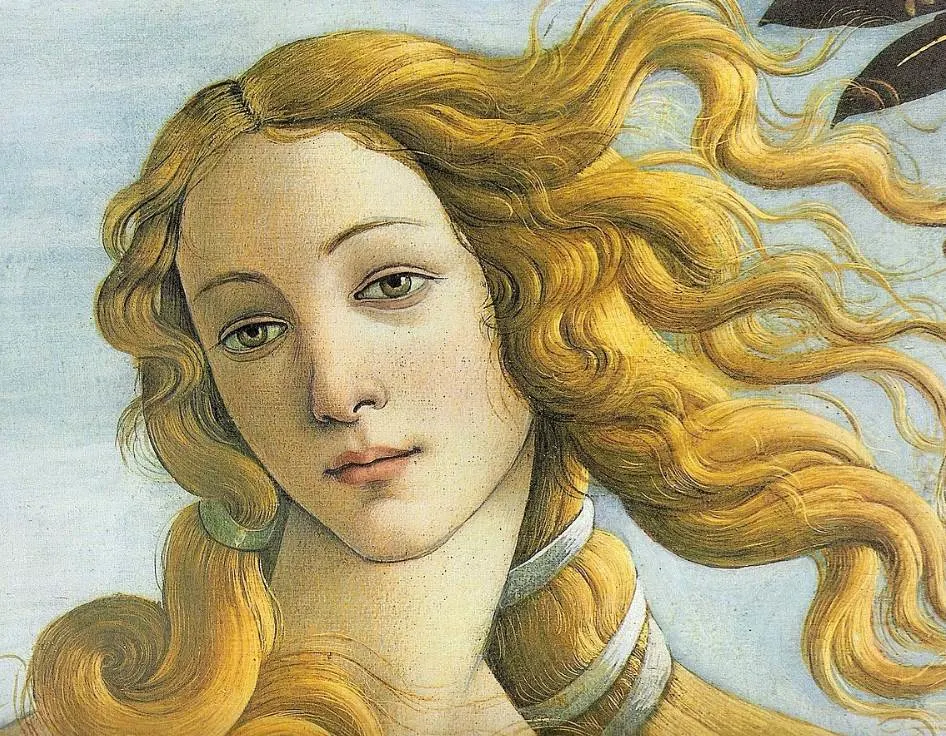
9. How big is The Birth of Venus by Sandro Botticelli?
Unlike most contemporary works, Botticelli didn’t use slow-drying oil but fast-drying tempera to complete this panting.
It’s a pretty big work of art as The Birth of Venus by Sandro Botticelli has dimensions of 172.5 × 278.9 centimeters (67.9 × 109.6 inches).
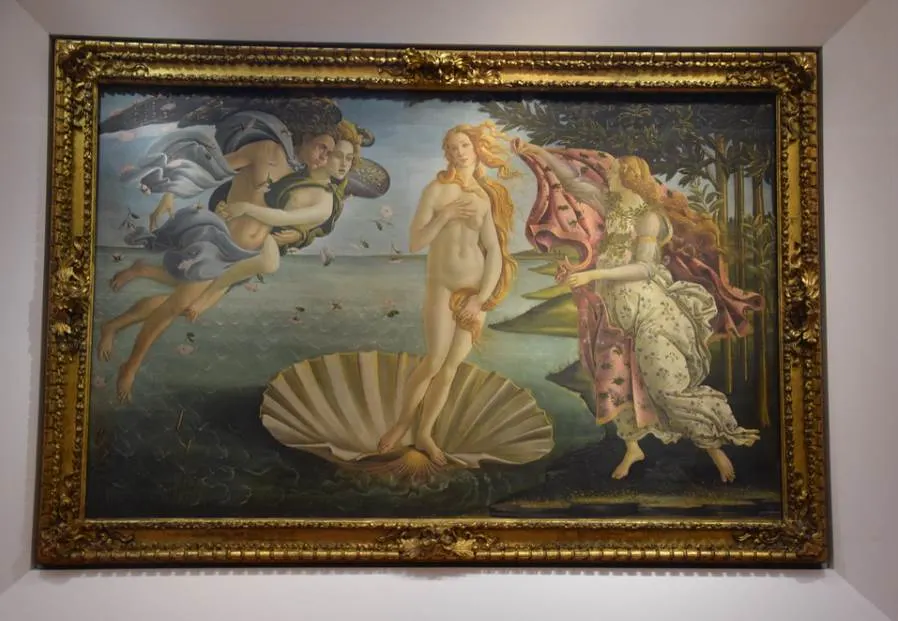
10. Where is the painting located today?
Nothing is certain about the circumstances in which the painting was completed. Some art historians have suggested that ti was commissioned by the Medici family, the powerful rulers of Florence at the time.
It’s possible that Lorenzo di Pierfrancesco de Medici (1463–1503) commissioned it to decorate his newly acquired mansion called Villa di Castello which he purchased in 1477.
It’s certain that both The Birth of Venus and Primavera hung together at this mansion just outside of Florence for an extended period.
When they were adjoined is unknown, but they have been together ever since. They stayed at the Villa di Castello until 1815 before being transferred to the Uffizi Gallery.
Today, they are still part of the collection of the Uffizi and are the main attractions at this popular museum in Florence.
